Eugene Curran Kelly was an American dancer, actor, singer, director and choreographer who sought to create a new form of American dance accessible to the general public, which he called “dance for the common man.”
December, 1990: It was made in Hollywood on the back lot of Metro-Goldwyn-Mayer smack-dab in the middle of the century – 1952 to be exact. You’ve all seen it and were thrilled to see it. You’ll probably see it again as will your children and your children’s children. Magic has a way of doing that to us. Of all the thousands of musical scenes in motion pictures and the hundreds of stars who performed in them, this one is the most memorable. It is the all-time classic show-stopper in that unique and wonderful art form known as the American Film Musical.
It starts with a handsome, dark-haired young man and a petite young woman kissing each other good night outside her house. After she slowly takes her leave of him, he begins strolling dreamily down a rain-filled street as music begins playing. And then with a smile on his face for the whole human race, the young man starts singing in that slightly grainy, misty-fog of a voice that belongs to him alone: “I’m singing in the rain, Just singing in the rain, What a glorious feeling I’m happy again !” He throws his head back and laughs and then he leaps to the lamp post, looking up to the sky as the rain dances happily on his shining face: “I’m laughing at clouds so dark up above, The sun’s in my heart and I’m ready for love.” He splashes his feet in the rain and then – look! He begins dancing in the rain-and, oh, how that man can dance. The open umbrella takes a life of its own becoming his partner as he swirls it around with joyous elation in the broad glowing streets. “Come on with the rain,
I’ve a smile on my face,” he sings out. And what a smile it is that great, big, wonderful, white, smile of Gene Kelly – expressing pure optimism and that special joy that comes with the first flush of love. He is us – at our best! He is the carefree child in all of us as he pulls out all the stops, dancing and splashing about in the rain puddles, gleeful, abandoned-in love with life!
Forty-five million of us watched the film of this scene on television the night Gene Kelly was presented with The Life time Achievement Award in the Performing Arts and we saw how the audience at Kennedy Center in Washington gave him the biggest ovation of the evening. Each time he sat down, the crowd roared him back to his feet time and again. It was the nation’s outpouring of appreciation for all the great moments he has given us over the course of his more than fifty years in show business.
It all started for him when he got his first big break on Broadway in the Rodgers and Hart musical, Pal Joey. He had graduated from the University of Pittsburgh and was operating his successful dance schools in Pittsburgh and in Johnstown, Pennsylvania when he decided one day to try his luck in New York. Within a short period he landed the part of Harry the Hoofer in William Saroyan’s whimsical hit “The Time of Your Life” where composer Richard Rodgers spotted him and asked him to audition for Pal Joey. Gene sang a slow ballad at the audition but Rodgers wanted to hear an “up” number. Caught off guard for the moment, Kelly quickly recalled a lively ditty he used to sing called “It’s the Irish In Me.” He sang it with all the gusto he had and when he was finished, a voice piped up from the darkness in the back of the theater saying: “That’s it. Take him!” The voice belonged to the man who had written the book for the play – John O’Hara. Kelly’s success in Pal Joey was total and unqualified and it made him a star.
From there he went west and began his legendary Hollywood career making a total of 43 motion pictures, taking as his dance partners along the way such stars as Judy Garland, Rita Hayworth, Leslie Caron, Vera-Ellen, Debbie Reynolds, yd Charisse and many others.
But Gene Kelly was more than a dancer and singer. He was the choreographer on all his films and he was the actual director for many of them. He directed the Broadway hit musical Flower Drum Song in 1958 and in 1969 he directed Barbara Streisand and Walter Mattthau in the blockbuster film Hello Dolly.
And it wasn’t all musicals or Gene Kelly either. One of his childhood heroes was Douglas Fairbanks and his fantasy came true when he was cast as D’Artagnan in the picture The Three Musketeers with Lana Turner as his co-star. He fenced with great skill and performed his own stunts in this movie which served to highlight his natural athleticism. Other non-musical big hits were Marjorie Morningstar with Natalie Wood and Inherit The Wind in which he played H.L. Mencken to Spencer Tracy’s Clarence Darrow and Frederic March’s William Jennings Bryan.
Kelly was first married to actress Betsy Blair from 1941 to 1957. His second wife, Jeanne Coyne, died of leukemia in 1973after thirteen years of marriage. This past year he married a third time, to writer Patricia Ward.
He has always been proud of his Irish roots and because his grandfather was born in Ireland he was eligible to obtain an Irish passport and no claims dual citizenship. He was the Grand Marshal in the St. Patrick’s Day Parade in Beverly Hills and most recently he received the American Irish Heritage Award from the American Ireland Fund.
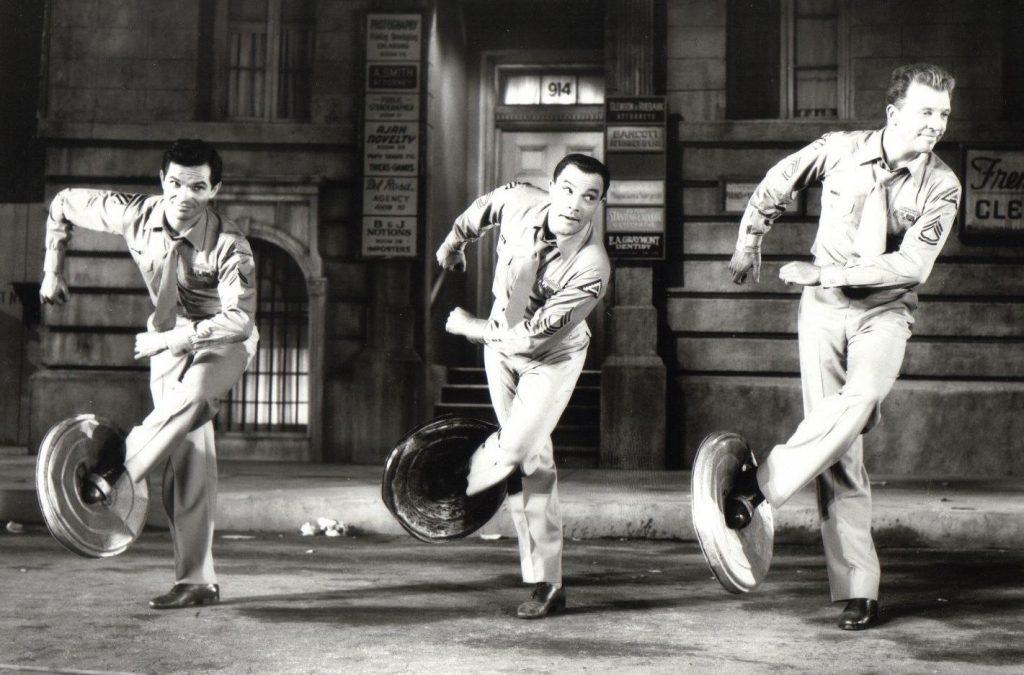
Scanlon: You’ve worked with the biggest names in motion pictures. Could you tell us about Judy Garland?
Kelly: Judy was a miraculous entertainer and she could learn scripts just by reading them through once. She had no formal education but she could adapt herself to any kind of entertainment. I deem myself lucky to have done my very first picture with her which was called For Me And My Girl.
Scanlon: I recently saw that movie and it seemed there was a special chemistry between you and Judy Garland. Was it that way in real life?
Kelly: Yes, we loved each other. I was married at the time and we had no so-called love affair, she was a deep friend of my wife and me and we were very close to her. And I loved her dearly as a friend.
Scanlon: Later, you worked with Frank Sinatra on three films: Anchors Aweigh, On The Town and Take Me Out To The Ball Game. And Sinatra is quoted as saying: “Not even a major sociological earthquake could dislodge me from my position as Gene Kelly’s number one fan.”
Kelly: He is a fan, I’m happy to say. And, of course, I am a big fan of his.
Scanlon: Sinatra is also quoted as saying you were quite the taskmaster and perfectionist when it came to teaching dance routines to people who never danced before like himself.
Kelly: Frank wanted to dance well, so he was a good student. And, as you say, he started not knowing any dancing and he wanted to learn as much as he could so that we could dance together and do it capably. I don’t say what we did was a marvelous routine but whatFrank did was very well done and he got better and better in each succeeding film. The same thing applies to Debbie Reynolds in Singing In The Rain. She came as a non dancer and just learned because she was bright and quick.
Scanlon: I wonder how many people are aware that not only did you star in these movies but you directed many of them and you choreographed all the dance routines for everybody.
Kelly: I choreographed dance numbers for the performers according to their abilities. And one big advantage I had was that earlier in my life I had been a dance teacher and had my own dance school. It paid off well for me. It was like a treasure-trove to re-discover that teaching ability because it helped me teach the routines more easily when I worked with so many non-dancers in Hollywood.
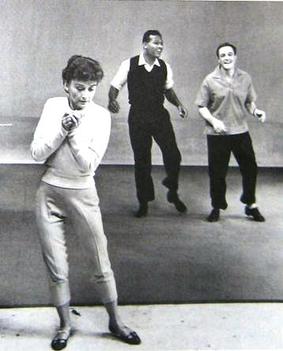
Scanlon: Now about Fred Astaire-could you tell us something about you and him and the motion picture, Easter Parade?
Kelly: I rehearsed on Easter Parade for several weeks but then I broke my ankle playing volleyball. Fred had already retired from dancing and I called him and persuaded him to put on his dancing shoes again and replace me. All the sets were ready and I just wasn’t ready to go. So Fred stepped in and he stayed in. He un-retired. And of course, we all thought that was wonderful because he continued to do more pictures after that.
The only big thing that ever bothered Fred and myself was that a lot of people who didn’t know much about dancing would say,”Well, those fellows dance alike.” They liked both of us, you see, and they couldn’t see that we were different. And that always annoyed Fred and me because our styles were so completely different. In fact, when we danced together we had to ameliorate our stuff so that it could work.
Scanlon: What was the difference between you and Astaire?
Kelly: Well, if you look at his pictures and mine, you’ll see that he was always sleek and rich with a top hat, white tie and tails, and I was more the common man in the street with a tee-shirt. And that difference was reflected in the dances. And certainly in my political ideology, I was always a liberal Democrat, and I felt for the masses and I didn’t want the dancing I did to be any kind of high class looking. And I say this, of course, with no sense at all of derogation. I just wanted my style to look athletic and reflect the common man. Whereas most of the dancers who had come before me, like Astaire, reflected the dancing of the rich.
Scanlon: You played the role of a sailor in several of your films and it was always with a strong and masculine style.
Kelly; Well, you see, I felt if you’re a sailor, you pretty well should dance like a sailor. I always feel dancing should complement and implement the role you are playing.
Scanlon: What about directing? You directed both on Broadway and in motion pictures.
Kelly: I actually love to create the dance more than I love to dance it. So naturally, I got into directing. That was my greatest joy. Once I created a dance number, I didn’t care about performing it as much as I did when I was creating it. So the directing was always more of a pleasant task to me than the actual performing. And that was the difference.
Scanlon: You know, I’ve often wondered about the number of successful Irish American dancers we’ve had in this country. Besides you, there’s Donald O’Connor, Dan Dailey and George Murphy -who went on to become a U.S. Senator from California-and Jimmy Cagney who danced so well in Yankee Doodle Dandy. Why do you think there were so many Irish in this field?
Kelly: Most of the dancers that went over well with the public were of Irish descent, with the exception of Fred Astaire who had an Austrian background. His name was originally Austerlitz.
Yes, you’re right about the Irish dancers. That’s a phenomenon of the time. The Irish really dominated the popular dance in twentieth century America, no doubt about it. I think it came from the fact that the dancing in Ireland for centuries has been clog dancing and reels and these dances certainly influenced the American people in the late nineteenth and twentieth centuries so that it actually became part of American tap dancing. And then Americans who were Irish had this big advantage. They blended the tap dancing of the Irish – as I call it – with the syncopation of the music of the Blacks and created a whole new form of tap dancing. But originally, American tap dancing came through that Irish source, from Ireland.
Scanlon: How Irish are you?
Kelly: Well, my full name is Eugene Curran Kelly. Curran was my mother’s family name. My mother’s father came from County Clare and immigrated in the last century and he lived until the beginning of the 1900’s. And so, I am Irish on both sides.
Scanlon: They say that of the 40 million people of Irish extraction in America the names Kelly and Murphy are the two most popular Irish names and I see you gave your children some good Irish names to go with Kelly.
Kelly: Well, yes, we named my oldest daughter Kerry because it is such a euphonious name. She was named after County Kerry and the Ring of Kerry. And then along came my son, Timothy, and then my daughter, Bridget. But I’d say my father had the all-time great Irish name: James Patrick Joseph Kelly.
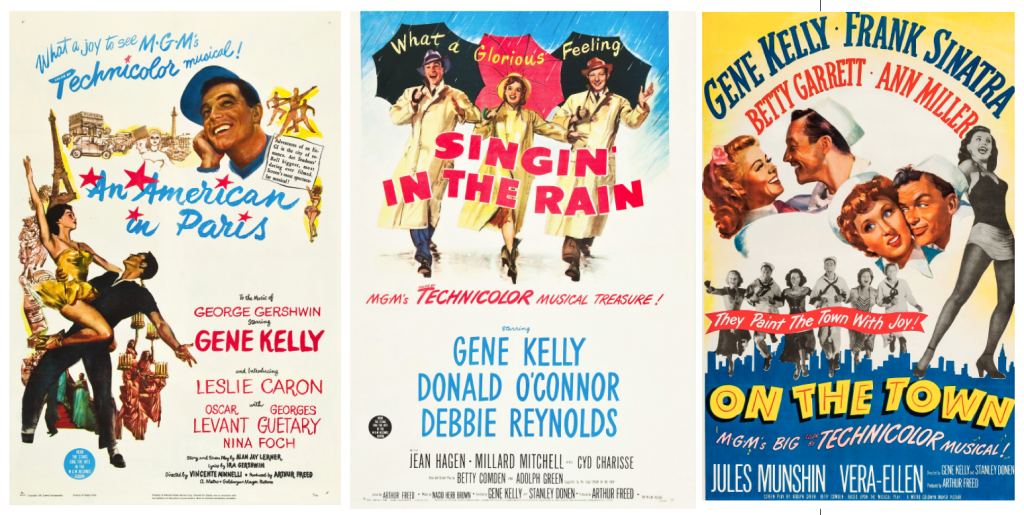
Scanlon: And what did this same James Patrick Joseph Kelly think about his young son, Eugene, going off and taking dancing lessons?
Kelly: Well, he didn’t mind that. He went along with my mother because they were eager, as all of the lower middle class Irish were, that their progeny should have the benefits of everything that they didn’t have. So all five Kelly kids took music and dance lessons when we could. And we weren’t a rich family. I took a couple of years of dancing when I was six or seven but then I had to fight the kids on the block too much about it, so my mother let my brother, Jim, and me quit. And then when I was in high school, I began dancing again because I discovered girls. I reneged on the priesthood, I guess. In high school, girls always like the best dancers so it’s a good ploy, you know. [He smiles] Scanlon: At what point did you decide to become a professional dancer?
Kelly: My father was out of work, so for purely economical reasons, my whole family started to give little dance lessons. My mother started a dancing school with us and it grew and grew. And finally as I learned more and more from teachers, mainly in Chicago where I went to study every summer, I found that I was really interested in doing dancing as my living. So I stayed with it. And it wasn’t until I left college that I made the final decision, because up until then, dancing was just a way to put myself through university. Scanlon: Did you have a role model ? Kelly: No, I didn’t have a role model. We just did every kind of dancing at the school: ballet, tap, social dancing, ball room, and acrobatic. We could do it all, we five Kelly kids. We didn’t have role models then because there weren’t any, except the ones we saw in vaudeville which was then dying.
Scanlon: I recall seeing you at a rally for Bobby Kennedy in Los Angeles in 1968. Kennedy was late in coming to the rally and to keep the crowd entertained, you rose up from the audience and did a little waltz or a fox trot with a woman who was there.
Kelly: You’re right. I’d forgotten about that.
Scanlon: I can’t quite recall what Bobby said that night but I do remember the cheer that went up when you did that little dance.
Kelly: Well, being an ardent Democrat in the Kennedy-Roosevelt tradition, I was also a close friend of Bobby’s. And so it was apropos that I should help out like that.
Scanlon: Were you always a Democrat? Kelly: Yes, I was always a Democrat since Roosevelt’s time when I was in college – and I still am.
Scanlon: What about your fellow actor, Ronald Reagan, what did you think of his politics?
Kelly: I never did agree with his “supply side” economics and I think the country is seeing the effect of that kind of economic philosophy now with the budget deficit and all the financial problems we are having.
But when it comes to aesthetics and art in America, we don’t let politics interfere with any of that and I am grateful, of course, for the Lifetime Achievement Award which was presented to me by President Reagan a few years ago. As far as a personal relationship, I knew Reagan for years when we worked together in the Screen Actors Guild.
Scanlon: I understand you do a great deal of reading on politics and history.
Kelly: Yes, history is a hobby of mine. I just finished that new book by Schama called Citizens about the French Revolution and I found it very enlightening.
Scanlon: France has played a big part in your life hasn’t it?
Kelly: Yes, I’ve always had a love affair with the French. I’ve worked at the Paris Opera with the ballet company and over the years I’ve shot a couple of films there. And they were kind enough to give me two awards, The Legion of Honor and The Commander of Arts and Literature. Scanlon: Your film, An American In Paris, which won the Academy Award probably did more for French tourism than anything else in the last thirty-five years.
Kelly: Well, the French say very kindly that it did. But, you know, we didn’t even shoot that film in France. We shot that entire film right here in the United States on the back lot of Metro-Goldwyn-Mayer. We just had a few shots of factual Paris but, of course, everybody thinks we shot the film in Paris.
I want to visit France again but it all depends on the availability and the timing. Just like Ireland-I want to go back there too. I make plans to go to Ireland every year because I haven’t been there for years, but I’ll get back there.
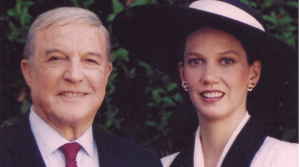
Scanlon: Dancing and choreography has been so much a part of your life and your passion. Do you miss it?
Kelly: I retired from dancing quite a few years ago. You can’t dance well enough when you’re old and when I danced I wanted to dance well enough, good enough. So I just said, “That’s it. Quit.” No, I don’t miss it. When I went into dancing, I was well aware that it had to be a short career. Your instrument is your anatomy and your anatomy doesn’t hold up. A musician has his piano or his Stradivarius but a dancer only has his body – so you face a short career. And when dancers get old, they should retire.
Scanlon: You sound like a happy man. Kelly: I’m a very happy guy.
Scanlon: What’s the secret?
Kelly: I just got married this year. That’s the big secret. And I love my children and we’re all happy.
Scanlon: What about your autobiography? When can we expect to see it?
Kelly: My book will be finished next year, and I hope you will read it.
Scanlon: You can be sure I and many, many more will be looking forward to it. Kelly: God Bless your Irish heart.

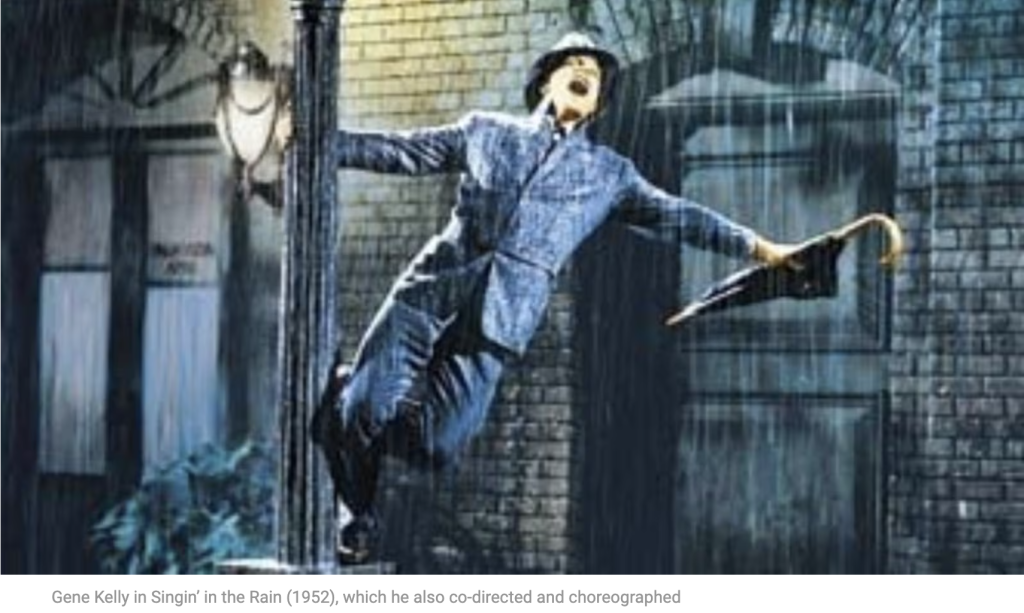
Leave a Reply